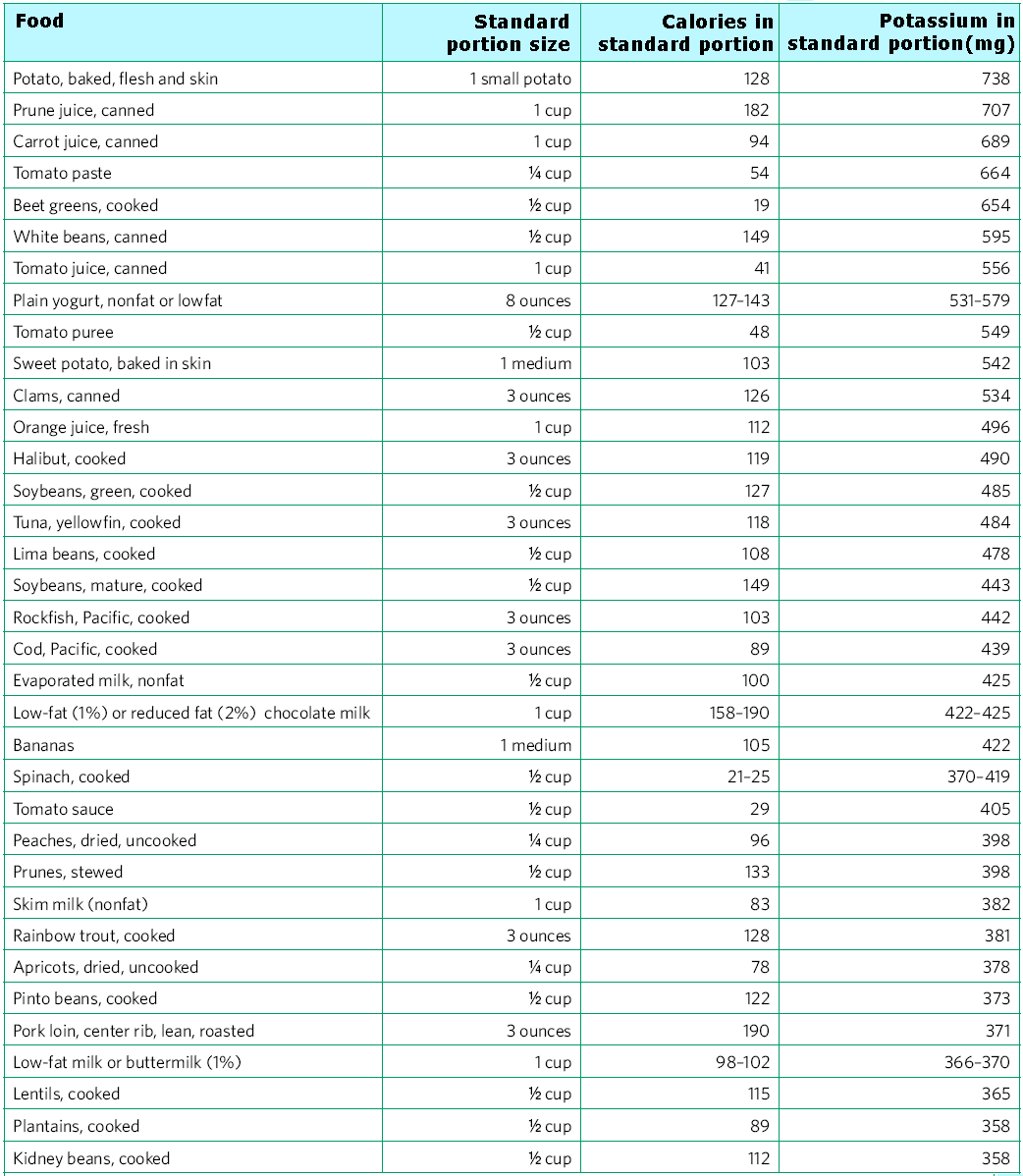Calories and Potassium in Standard Portions
Proper levels of Potassium are important for seniors and those approaching retirement. Both elevated and low levels of potassium have similar symptoms including weakness in muscles, cardiac arrhythmia and possible paralysis.
From the USDA/USDHHS Guidelines: “High intake of sodium is related to the high prevalence of high blood pressure in the United States. Dietary potassium can lower blood pressure by blunting the adverse effects of sodium on blood pressure. Other possible benefits of an eating pattern rich in potassium include a reduced risk of developing kidney stones and decreased bone loss. The Adequate Intake (AI) for potassium for adults is 4,700 mg per day. AIs are amounts of a nutrient that are adequate for almost everyone in the population; therefore, intake below an AI may be adequate for some people. Available evidence suggests that African Americans and individuals with hypertension especially benefit from increasing intake of potassium.”
“Few Americans, including all age-gender groups, consume potassium in amounts equal to or greater than the AI. In view of the health benefits of adequate potassium intake and its relatively low current intake by the general population, increased intake of dietary potassium from food sources is warranted. Individuals with kidney disease and those who take certain medications, such as ACE inhibitors, should consult with their health care provider for specific guidance on potassium intake.”
“Dietary sources of potassium are found in all food groups, notably in vegetables, fruits, and milk and milk products. Americans should select a variety of food sources of potassium to meet recommended intake rather than relying on supplements..”

Full USDA/USDHHS guidelines can be found here.
